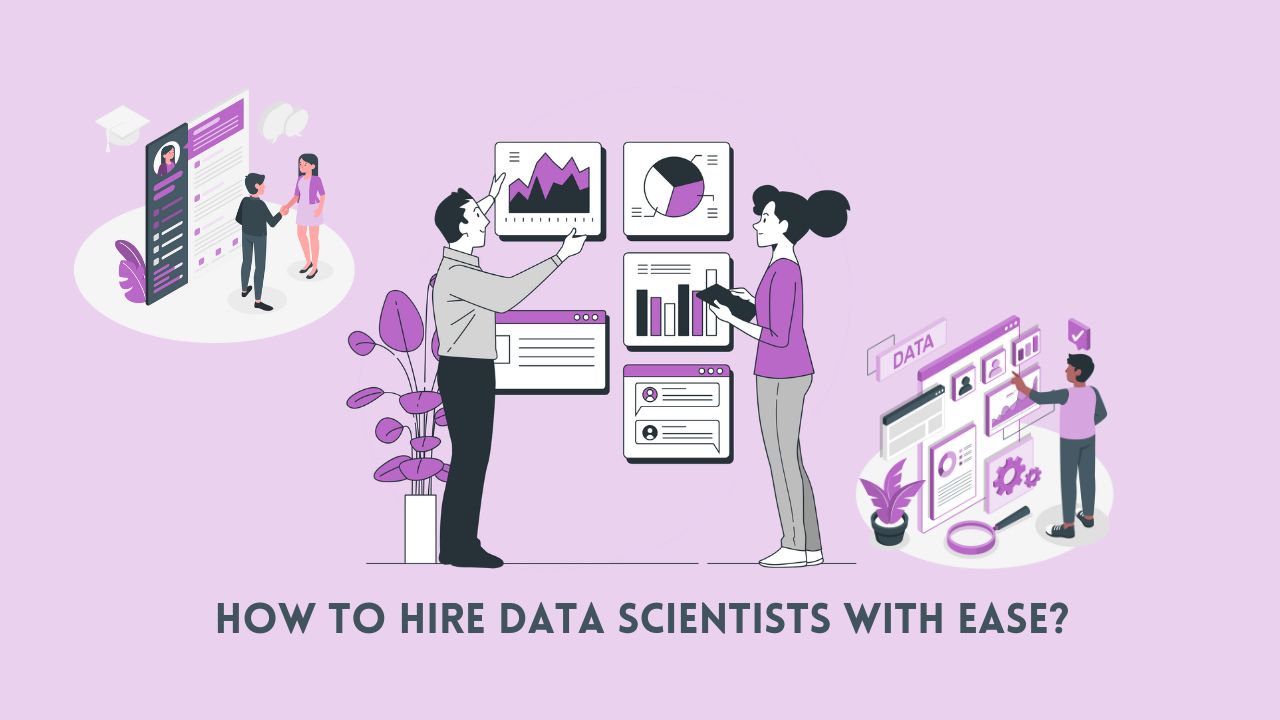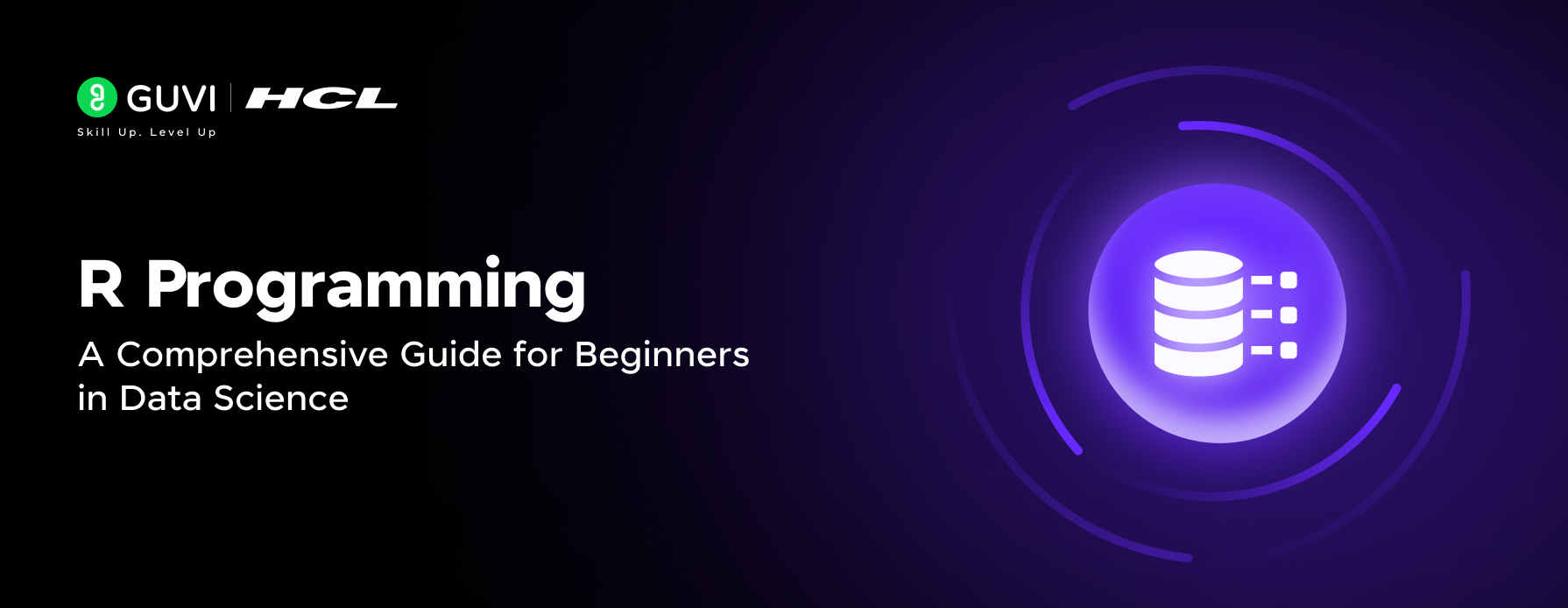
5 Key Components of Data Science: An Effective Guide
Mar 13, 2025 5 Min Read 6618 Views
(Last Updated)
Whichever field of study you take, it is mandatory that you have to master the components of that field to ensure that you stay ahead of the others.
If you want to succeed in the field of data science, then it is a must for you to understand everything about the components of data science.
If you don’t know where to start, worry not, you have already started by coming to the right blog at the right time. This article will help you understand the components of data science in and out.
So, let us get started!
Table of contents
- What are the Components of Data Science?
- 5 Key Components of Data Science
- Data Collection
- Data Cleaning
- Data Exploration and Visualization
- Data Modeling
- Model Evaluation and Deployment
- Best Practices to follow when using the Components of Data Science
- Best Practices for Data Collection
- Best Practices for Data Cleaning
- Best Practices for Data Visualization
- Best Practices for Data Modeling
- Best Practices for Model Evaluation and Deployment
- Conclusion
- FAQs
- What is the difference between data modeling and data analysis?
- What is the purpose of cross-validation in model evaluation?
- What is the significance of standardizing data in the cleaning process?
- What are some common challenges in data collection?
What are the Components of Data Science?

Data Science involves five key components that you’ll need to understand: Data Collection, Data Cleaning, Data Exploration and Visualization, Data Modeling, and Model Evaluation and Deployment.
Let us see a gist about these components of data science and then we’ll see about it in depth in the next section.
First, you’ll gather raw data from various sources during Data Collection. Next, you’ll transform this raw data into a usable format by cleaning it and fixing any inaccuracies or inconsistencies.
Then, you’ll explore and visualize the data to understand its characteristics and uncover patterns. After that, you’ll use data modeling to make predictions or identify patterns using mathematical algorithms.
Finally, you’ll evaluate and deploy your model to ensure it performs well and can be used in real-world applications. These components of data science help you extract valuable insights and make informed, data-driven decisions.
Let us see about these components of data science in-depth. But if you are a beginner and wondering how to become a data scientist, read our article – A Complete Guide To Become A Data Scientist In 3 Months?
5 Key Components of Data Science
We already gave you the gist of the components of data science and now you have an idea of what’s about to come. This is going to be a fun journey so buckle up and sit tight!
If you have a basic understanding of the field and the components of data science, you might already know that it involves a mix of statistics, computer science, and domain expertise.
But if not, then you should seriously consider enrolling in a professionally certified online Data Science Course that teaches you everything about data science and helps you get started as a data scientist.
Let us now dive into the five key components of Data Science that you should be familiar with to navigate your data scientist journey effectively.
1. Data Collection

Data Collection is the very first and one of the most foundational steps in the components of data science. Imagine you’re about to bake a cake. Before you can start mixing ingredients, you need to gather everything you’ll need, like flour, sugar, eggs, and so on.
In Data Science, data collection is much like gathering your ingredients. You can’t proceed without having the raw material, which in this case is the data.
Methods of Data Collection
- Surveys and Questionnaires: Useful for gathering qualitative data.
- Web Scraping: Extracting data from websites using tools like BeautifulSoup or Scrapy.
- APIs: Accessing data programmatically from services like Twitter or Google Analytics.
- Databases: Pulling data from relational databases using SQL.
Why is Data Collection Important?
Think of data collection as the foundation of a house. No matter how well you build the rest of the house, if the foundation is weak, it won’t be stable.
Similarly, if the data you collect is not accurate, complete, or relevant, any analysis or model you build on top of it won’t be reliable. Collecting high-quality data ensures that your findings and insights will be trustworthy and valuable.
2. Data Cleaning

Data cleaning, also known as data wrangling or data preprocessing, is a crucial step in the Data Science process.
It’s like preparing your ingredients before cooking a meal. Even if you have the best ingredients, you still need to wash, chop, and measure them correctly to ensure your dish turns out well. Similarly, data cleaning ensures that your data is accurate, consistent, and ready for analysis.
Common Data Cleaning Tasks
- Handling Missing Values: Using techniques like imputation or removing incomplete records.
- Removing Duplicates: Ensuring each record is unique to maintain data integrity.
- Correcting Errors: Fixing typos, incorrect entries, or outliers.
- Standardizing Formats: Converting data into a consistent format (e.g., date formats).
Tools and Techniques for Data Cleaning
- Spreadsheets (Excel, Google Sheets)
- Programming Languages (Python, R)
- Data Cleaning Tools (OpenRefine, Trifacta)
3. Data Exploration and Visualization

Once you’ve collected and cleaned your data, the next crucial step in the components of Data Science is data exploration and visualization.
Think of this step as getting to know your data better—it’s like reading a recipe in detail before you start cooking, so you understand the ingredients and steps involved.
First, let us understand what Data exploration is. It is also known as Exploratory Data Analysis (EDA), which involves examining your dataset to understand its main characteristics.
It’s a crucial step in the components of data science because it helps you get a feel for your data and identify any anomalies or patterns that could influence your analysis.
On the other hand, Data visualization is the process of creating graphical representations of your data. It’s like presenting your data in a visual format.
Tools and Techniques
- Descriptive Statistics: Mean, median, mode, standard deviation, etc.
- Data Visualization Tools: Matplotlib, Seaborn, Tableau, and Power BI.
- Exploratory Data Analysis (EDA): Using plots like histograms, scatter plots, and box plots to understand data distribution and relationships.
4. Data Modeling

Data modeling is one of the core components of Data Science, where the real magic happens. It’s like creating a recipe based on the ingredients you’ve gathered and prepared.
In simple terms, data modeling involves using mathematical algorithms to make sense of your data and predict future outcomes or identify patterns.
Steps in Data Modeling
- Defining the Problem
- Choosing the Right Model
- Training the Model
- Evaluating the Model
- Deploying the Model
Types of Models
- Regression Models: Predicting a continuous outcome variable.
- Classification Models: Predicting categorical outcomes (e.g., spam vs. non-spam).
- Clustering Algorithms: Grouping similar data points together (e.g., customer segmentation).
- Time Series Analysis: Analyzing data points collected or recorded at specific time intervals.
Tools for Data Modeling
- Python Libraries (Scikit-learn, TensorFlow, Keras)
- R Packages (caret, randomForest)
- SQL
- Automated Machine Learning Tools (AutoML, H2O.ai)
If you wish to explore more on how Python is crucial for Data Science, then have a look at this – Best Python Course Online with IIT Certification
5. Model Evaluation and Deployment

Imagine you’ve baked a cake but didn’t taste it before serving. It might look good on the outside but could be dry or too sweet.
Similarly, without proper evaluation, you can’t be sure your data model is accurate and reliable. That’s why, in the components of data science, we have a Model evaluation that helps you verify that your model works as expected and meets the desired criteria.
Evaluation Metrics
- Confusion Matrix: A table to evaluate the performance of a classification model.
- ROC Curve and AUC: Assessing the performance of a binary classifier.
- Mean Absolute Error (MAE): Evaluating regression models.
Steps in Model Evaluation
- Splitting Data into Training and Testing Sets
- Using Performance Metrics
- Cross-Validation
Once you’re satisfied with your model’s performance, it’s time to deploy it. Deployment means making your model available for use in a real-world application, where it can start making predictions on new data.
Steps in Model Deployment
- Preparing the Model for Deployment
- Integrating the Model into an Application
- Monitoring and Maintenance
Model evaluation and deployment are critical steps in the components of Data Science, ensuring your models are accurate and useful in real-world applications.
Best Practices to follow when using the Components of Data Science

Here are some of the best practices for the components of data science that you need to keep in mind before you start working on it:
1. Best Practices for Data Collection
To ensure you’re collecting the best possible data, here are some tips to keep in mind:
- Define Your Goals: Clearly define what you want to achieve with your data collection. This will help you determine what data you need and where to find it.
- Choose the Right Tools: Depending on your data source, choose the appropriate tools. For databases, learn SQL; for web scraping, use BeautifulSoup or Scrapy; for APIs, familiarize yourself with programming languages like Python.
- Ensure Data Quality: Aim to collect high-quality data by validating it at the source. For example, ensure that your survey questions are clear and unbiased to get accurate responses.
2. Best Practices for Data Cleaning
- Understand Your Data: Before you start cleaning, take some time to understand the dataset. What kind of data is it? What are the common issues? This will help you plan your cleaning process effectively.
- Document Your Process: Keep a record of what you did to clean the data. This is important for reproducibility and for anyone else who might work with the data in the future.
- Check Your Work: After cleaning, always verify that your data is correct and that you haven’t introduced any new errors. It’s like tasting your cake batter before baking – you want to ensure everything is just right.
3. Best Practices for Data Visualization
- Know Your Audience: Tailor your visualizations to the audience’s level of expertise and needs.
- Choose the Right Chart: Use the appropriate chart type for your data and the story you want to tell.
- Simplify: Avoid clutter by keeping your visuals clean and focused.
4. Best Practices for Data Modeling
- Understand Your Data: Before modeling, spend time exploring and understanding your data.
- Choose the Right Model: Select a model that fits the nature of your problem and data.
- Avoid Overfitting: Ensure your model generalizes well to new data by not overfitting to the training data.
5. Best Practices for Model Evaluation and Deployment
- Start Simple: Begin with simple models and metrics before moving on to more complex ones. This helps you understand the basics and build a strong foundation.
- Automate Testing: Use automated testing frameworks to ensure your model’s predictions are accurate and reliable.
- Version Control: Use version control for your models and deployment scripts to keep track of changes and ensure reproducibility.
By following these best practices when you’re working with the components of data science, you ensure that you work with it in the best manner possible and it makes your workflow easy as well.
If you want to learn more about the components of Data Science and its functionalities in the real world, then consider enrolling in GUVI’s Certified Data Science Course which not only gives you theoretical knowledge but also practical knowledge with the help of real-world projects.
Additionally, if you want to learn Python from scratch, have a look at here – Everything that You Need to Know about Python.
Conclusion
In conclusion, the five key components of data science are Data Collection, Data Cleaning, Data Exploration and Visualization, Data Modeling, and Model Evaluation and Deployment.
Understanding these five key components of Data Science is essential for anyone looking to make a mark in this field. From data collection to deployment, each step plays a critical role in deriving meaningful insights and making data-driven decisions.
Whether you’re just starting or looking to deepen your knowledge, focusing on these components will help you build a solid foundation in Data Science.
FAQs
Data modeling involves creating mathematical models to make predictions or classify data, while data analysis encompasses a broader range of techniques to explore and interpret data.
Cross-validation provides a more reliable estimate of a model’s performance by training and testing it on different subsets of data multiple times. This helps prevent overfitting and ensures the model generalizes well to new data.
Standardizing data ensures consistency across your dataset, making it easier to analyze. This involves converting data into a common format, such as standardizing date formats or measurement units.
Common challenges include data privacy concerns, data quality issues, and integrating data from disparate sources. Addressing these challenges is crucial for reliable data collection.
.



















![10 Impressive Data Visualization Project Ideas [With Source Code] 12 Data Visualization Project Ideas](https://www.guvi.in/blog/wp-content/uploads/2024/11/best_data_visualization_project_ideas_with_source_code_.webp)





Did you enjoy this article?